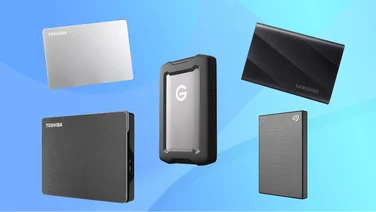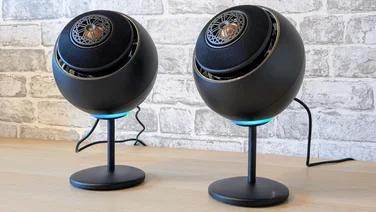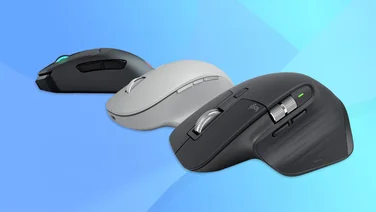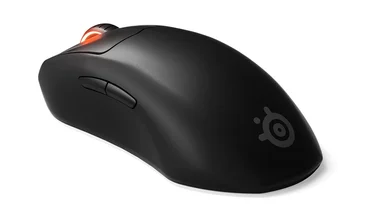To help us provide you with free impartial advice, we may earn a commission if you buy through links on our site. Learn more
- Best USB memory stick: At a glance
- How to choose the best USB memory stick for you
- How we test USB memory sticks
- The best USB memory sticks you can buy in 2023
- 1. SanDisk Ultra Luxe: Best value memory stick
- 2. Kingston DataTraveler Kyson: Best memory stick for price and performance
- 3. Samsung Bar Plus: A stylish high-performance USB memory stick
- 4. Kingston DataTraveler 70: Best cheap USB-C stick
- 5. Samsung Duo Plus: Best high-performance USB-C memory stick
- 6. Integral Metal Fusion USB 3.0: Best leave-in drive for laptops
- 7. Corsair Survivor Stealth: Best rugged USB memory stick
- 8. Transcend JetFlash 920: Best USB memory stick for speed
- 9. SanDisk iXpand Flash Drive Luxe: Best USB flash drive for iPhones and iPads
- 10. Integral Turbo USB 3.0: Best value high-speed, high-capacity drive

There’s an argument that USB flash drives (or memory sticks) are the best bargains in storage today. The little blighters are just so useful. While it’s more convenient to move data from one PC to another using the cloud, it’s not much fun doing it with 8GB or more of video files and photos. There’s no faster way to move massive files than to plug a flash drive into one computer, copy the files across, then plug it into the other and reverse the process. It’s quick, easy and reliable – and incredibly cheap to boot.
Nor is this the only reason to keep a flash drive within arm’s reach. You wouldn’t want to use one for full PC backups, but they’re ideal for keeping a safe copy of important documents or photos, and you can stash them in a locked drawer or safe. Many TVs, media boxes and car stereos can play music or video files directly from a USB stick, and you’re less likely to lose one than you are an SD card. Finally, USB flash drives are ideal for expanding the limited storage space you tend to get on budget laptops. Plug in one of today’s low-profile efforts and you can add 64GB for less than £15.
Transcend 128GB JetFlash crashes to lowest price EVER for Black Friday
Experience lightning-fast speeds of up to 420/400 MB/s for even less cash, as the 128GB Transcend JetFlash 920 USB falls from an average Amazon price of £29 to an all-time low of £23. Our mini review (below) calls it the fastest USB flash drive we've ever tested, efficiently transferring your data as soon as you need it. With free backup software included, this one's an absolute bargain.
£23
Amazon
Best USB memory stick: At a glance
- Best for value: SanDisk Ultra Luxe | From £10
- Best value USB-C drive: Kingston DataTraveler 70 | From £3.99
- Best performance USB-C drive: Samsung Duo Plus | £23
- Best for speed: Transcend JetFlash 920 | From £30
- Best for high capacity: Integral Turbo USB 3.0 | From £17
How to choose the best USB memory stick for you
How much do they cost?
Like SD and microSD cards, USB flash drives have become a commodity product. There’s an abundance of great options at every price point, and choosing a higher capacity, better performance or a particular physical design rarely costs much more than buying a basic device. Shop online and you can pick up a 32GB USB 3.0 stick for well under £10, or double the capacity for just a fiver or so more. Things only get expensive with the highest-capacity drives, but you can still find 256GB devices for between £30 and £50 without much effort.
How much storage do I actually need?
When most of us buy a USB flash drive, we’re balancing price against capacity. 8GB and 16GB drives still exist, but these days there’s precious little price difference between them and a 32GB drive. You’ll pay £5 to £8 more for a 64GB drive, and it’s really only once you get to 128GB and above that you start paying the big bucks. 64GB is probably the sweet spot, particularly if you’re not moving massive files around, but if you’re working with game files or video, or adding some extra storage space to a laptop, a 128GB or 256GB drive can be well worth the extra. We’re even seeing a few 512GB drives creeping through, although here a USB SSD will give you more performance for around the same price.
What about performance?
Performance is determined by three things: the interface, USB mass storage controller and NAND flash memory chip within the drive. Most USB flash drives sport a standard, rectangular USB-A connector, though the popularity of USB-C in laptops and tablets means that dual-interface and USB-C only drives are becoming more and more popular.
The controllers usually support a range of USB standards, with the fastest being USB 3.1 (or USB 3.2 Gen 1 as it’s often called now) or USB 3.2 Gen 2. USB 2.0 drives are now unusual, and even the cheapest drives support USB 3.0, with theoretical speeds of up to 625MB/sec (though no drives actually reach this level). The USB 3.1 interface goes up to a potential 1,250MB/sec, although, again, no actual USB memory sticks get even close to that performance.
This really comes down to the speeds of the controllers on the drives and the flash memory being used. We’re seeing USB 3.2 Gen 2 SSDs reach speeds in excess of 1,700MB/sec and even USB 3.2 Gen 1 SSDs can hit 540MB/sec or more, but the fastest USB flash drives we’ve seen are stuck at under 400MB/sec, and most are significantly slower. As we said, if you want the highest levels of performance with a larger capacity, you could be better off with a 500GB SSD.
Speeds can also vary with the capacity of the drive, with write speeds particularly affected. In some cases, you may find that the 32GB or 64GB version of a drive is significantly slower than the 128GB or 256GB version, so bear this in mind if you’re looking for a drive that can transfer large quantities of data quickly.
Is there anything else to look out for?
The physical design can also be important. While most USB flash drives used to look much the same, we’re now seeing a wider range of bar-type drives (with a metal case that extends away from the USB connector), drives with concealed slide-out connectors and low-profile drives designed to fit almost entirely inside a laptop, leaving only a small tab to pull the device out with. There are also huge variations in build quality, with some drives feeling rather cheap and plasticky when compared to others that are reassuringly robust and have metal casings.
What’s more, a few USB flash drives now have clever dual-interface designs, allowing you to plug the same device into your Mac or PC (via a USB Type-A connector) and an iOS or Android device (using a Lightning or micro-USB/USB Type-C connector). This can be handy for transferring files between mobile and desktop/laptop platforms.
Finally, more and more drives are packing in security features. As some businesses have learned to their cost, a USB drive isn’t always the safest place to hold sensitive data, particularly if it’s being carried around from work to home and back again or it slips out of a bag or pocket. Some drives come with software tools to encrypt and password-protect a specific folder, while a handful include some form of hardware security covering folders or the entire drive, blocking all access without a password or key combination. While most of us don’t need that level of security, it’s a must if you plan to store or carry any personal or financial information on the drive.
How we test USB memory sticks
We test USB memory sticks using the industry-standard CrystalDiskMark and AS-SSD benchmarking tools. All figures quoted are from CrystalDiskMark, but we use AS-SSD to look for anomalous results and for a second opinion. We focus on the sequential read/write speeds, since these will have the most impact when you’re copying data to and from a memory stick. However, we also note the random read/write speeds, which affect the performance should the memory stick be used to, say, host a Linux operating system or store and run Windows apps.
Finally, we run a file transfer test using a 6.58GB 4K video file, copying it to and from a laptop with a PCIe 3.0 SSD. This gives us a real-world check of the memory stick’s sequential read and write speeds. Where a stick supports both the USB Type-C and Type-A interfaces, we’ll test with both to see if there are any discrepancies in performance between the two.
READ NEXT: The best microSD cards
The best USB memory sticks you can buy in 2023
1. SanDisk Ultra Luxe: Best value memory stick

Price when reviewed: From £10 | Check price at CCL The SanDisk Ultra Luxe is a slimline, all-metal drive in the vein of Samsung’s brilliant Bar Plus, yet it comes in at the sort of price level where we used to see cheap and cheerful plastic drives. It’s certainly robust enough, and SanDisk backs it up with a five-year warranty, then throws in password protection and file recovery software to sweeten the deal even further. Of course, performance isn’t quite at the Bar Plus’s level, with sequential read speeds topping out at 151.5MB/sec and write speeds at just 43.44MB/sec, and the random read/write speeds are fairly poor. But for moving files between home and work or home and school, backing up some photos or just keeping installation files handy, this cost-conscious drive is just the job.
Key specs – Interface: USB 3.1 Gen 1; Storage capacities: 64GB to 256GB; Claimed speeds: 150MB/sec read; Extra features: RescuePRO Deluxe file recovery software, five-year warranty
2. Kingston DataTraveler Kyson: Best memory stick for price and performance

Price when reviewed: From £7.99 | Check price at AmazonThe Samsung Bar Plus used to be our price/performance king, but recent price rises mean it’s now been usurped by the Kingston DataTraveler Kyson. This drive is one of the best value around, matching many low-end USB flash drives price for price across almost all capacities. Yet it’s also a fantastic all-rounder, with sequential read speeds of 221MB/sec and write speeds of 94.3MB/sec. Even its random read speeds – around 11MB/sec – are better than the norm, though random write speeds are still under 0.02MB/sec. You can go faster and you can go cheaper, but you’ll struggle to find a USB flash drive with a better balance between the two.
Key specs – Interface: USB 3.2 Gen 1; Storage capacities: 32GB to 256GB; Claimed speeds: 200MB/sec read, 60MB/sec write; Extra features: N/A
3. Samsung Bar Plus: A stylish high-performance USB memory stick

Price when reviewed: From £12 | Check price at AmazonYou would have to be out of your mind to describe USB flash drives as approaching sexy, but the Samsung Bar Plus is the best-designed drive in town. Everything is encased in a slick metallic casing that’s not just waterproof and shock-proof, but temperature-proof, magnet-proof and X-ray proof. Samsung even backs it up with a five-year warranty. Yet the Bar Plus isn’t just about style, as performance is absolutely stellar. We would previously tested the 32GB version, which reached sequential read speeds of over 200MB/sec, but the 128MB version is significantly faster, hitting read speeds of 297MB/sec and write speeds of 69.5MB/sec – and it’s no slouch on random read/write speeds, either. Sure, the Bar Plus falls behind the Patriot Rage Elite on sequential write speeds, but if you want to stream 4K video from a USB stick or quickly copy huge files to and from a PC, this is the drive to do it with.
Key specs – Interface: USB 3.1; Storage capacities: 32GB to 256GB; Claimed speeds: 200MB/sec read (32-64GB), 300MB/sec read (128-256GB), Write not specified; Extra features: Five-year warranty
4. Kingston DataTraveler 70: Best cheap USB-C stick

Price when reviewed: From £3.99 | Check price at AmazonUSB-C flash drives often come with a price premium, but that’s not the case with the DataTraveler 70, which is every bit as cheap as equivalent USB-A drives. 32GB for under a fiver or 64GB for just a few quid more isn’t much for a well-built unit with a five year warranty and transparent end-cap to protect the plug. You don’t get any performance advantage, with sequential read speeds topping out at 103MB/sec and write speeds at a lowly 23.3MB/sec, but for transferring documents and other small files that’s really not going to be a deal breaker. It’s a good, everyday USB-C drive at a bargain price.
Key specs – Interface: USB 3.2 Gen1 Type-C; Storage capacities: 32GB to 256GB; Claimed speeds: 80MB/sec read, write not stated; Extra features: Five-year warranty
5. Samsung Duo Plus: Best high-performance USB-C memory stick
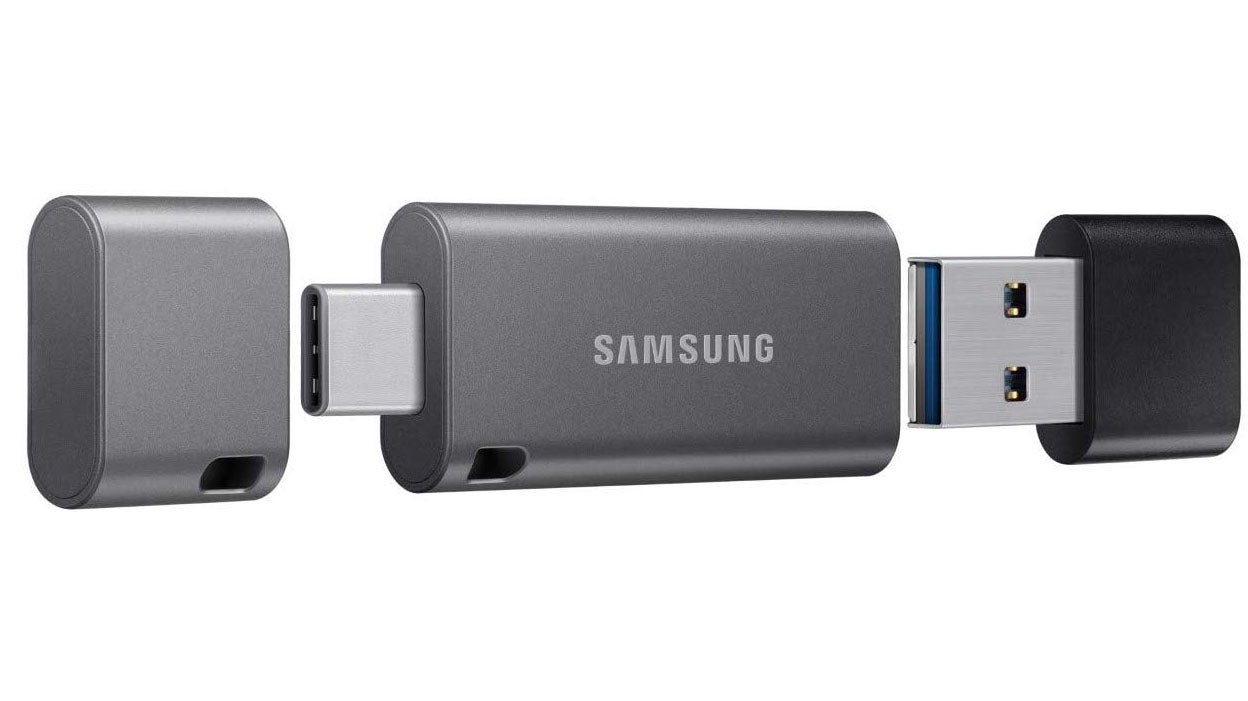
Price when reviewed: £23 | Check price at InknToner The Duo Plus takes a different approach to the usual USB Type-C flash drive. Pull off the protective cap and there’s a USB Type-C connector, ready for your ultra-portable laptop, tablet or phone. Pull off the base, however, and this contains a neat Type-C to Type-A adapter, ready for an older laptop or desktop PC. It’s a brilliant no-fuss arrangement, and the drive’s pretty fast as well, reaching sequential read speeds of 280MB/sec, with sequential write speeds of 82MB/sec. It’s not quite so fast through a USB-A connection, with read speeds falling to 225MB/sec, but if you need a way to transfer files between, say, a recent laptop with a USB-C port and a desktop PC without one, this is the drive to buy.
Key specs – Interface: USB Type-C with Type-A adapter; Storage capacities: 32GB; Claimed speeds: 200-300MB/sec read, write not stated; Extra features: None
6. Integral Metal Fusion USB 3.0: Best leave-in drive for laptops

Price when reviewed: From £6.59 | Check price at AmazonThe Integral Metal Fusion is tiny – so tiny that only a small section with a slot running through it will stick out of your PC or laptop, while Integral bundles a handy loop of string and metal to give you some chance of pulling the thing out. This makes the Metal Fusion a menace if you want something to move data from PC to PC, but an absolute winner if you’re looking for some extra storage for your laptop. It’s cheap and its sequential read times are impressive, beating the stated 200MB/sec by a good 5%. Write times are respectable at 45MB/sec, though the random read/write speeds aren’t so good. You’ll want to keep your apps on an internal HDD or SSD, but this is still a brilliant drive for storing music, video, photos and documents, and you won’t even know it’s there.
Key specs – Interface: USB 3.0; Storage capacities: 32GB to 128GB; Claimed speeds: 200MB/sec read, 30MB/sec write; Extra features: N/A
7. Corsair Survivor Stealth: Best rugged USB memory stick

Price when reviewed: From £17 | Check price at AmazonDo you lead the life of an international secret agent? Are you likely to be parachuted behind enemy lines with a USB drive full of top-secret info? Or are you just a very clumsy person likely to drop a USB drive in your tea, in a busy car park or down the toilet? Either way, the Corsair Survivor Stealth is the drive for you. With the cap screwed on, this tough little drive is waterproof to 200m, shock-resistant, vibration-resistant and generally impervious to damage. What’s more, it’s surprisingly speedy, with sequential read speeds of nearly 180MB/sec. You might not survive a zombie apocalypse, but with this drive, your data will.
Key specs – Interface: USB 3.0; Storage capacities: 32GB to 1TB; Claimed speeds: Not specified; Extra features: None
8. Transcend JetFlash 920: Best USB memory stick for speed

Price when reviewed: From £30 | Check price at AmazonIt might not look as flashy as our previous speed winner, the Patriot Rage Elite, but the Transcend JetFlash 920 is the fastest USB flash drive we’ve tested. In our tests it hit a sequential read speed of 395MB/sec, and where previous speed demons have suffered slower write speeds, the JetFlash polled 344MB/sec. If you’re backing up or transferring a lot of 4K video files or high-res images, then this is the drive to it with, and even its random read/write speeds are impressive, beating strong competitors such as the Samsung Bar Plus and Duo Plus. Throw in a tough, sandblasted aluminium cover and free backup software, and you have the new king of high-end memory sticks.
Key specs – Interface: USB 3.2; Storage capacities: 128GB and 256GB; Claimed speeds: 420MB/sec read, 400MB/sec write; Extra features: Transcend Elite data management software
9. SanDisk iXpand Flash Drive Luxe: Best USB flash drive for iPhones and iPads

Price when reviewed: From £42 | Check price at AmazonIf you want an easy way to shift files between an iPad and a Mac or Windows laptop, then the iXpand Flash Drive Luxe could be the flash drive for you. In fact, it’s just as handy if you want a backup of your iPhone’s photos or to clear out a little space in its onboard storage. Just install the iXpand Drive app on your iPhone or iPad, plug in the Flash Drive Luxe, and it will happily copy over all your photos, taking around seven minutes to copy 4.2GB of snaps.
The central section of the stick then swivels around, and you can plug the USB-C connector into your Mac or PC and copy the files from there. You can also copy music and video files and documents over to the drive from the app. This isn’t a speedy drive, with sequential read/write speeds of just 85.9MB/sec and 41.7MB/sec in our tests, and it’s a lot more expensive than your average USB-C drive, but it does a useful job if you’re a heavy iPhone or iPad user.
Key specs – Interface: USB 3.2 Type-C/Lightning; Storage capacities: 64GB to 256GB; Claimed speeds: Not stated; Extra features: iXpand Drive transfer app
10. Integral Turbo USB 3.0: Best value high-speed, high-capacity drive

Price when reviewed: From £17 | Check price at AmazonLooking for a fast drive with plenty of space? Take a look at the Integral Turbo USB 3.0. It’s available in sizes from 64GB up to 512GB, and it just gets speedier as the capacity rises. All versions boast 400MB/sec read speeds, but the 64GB version only stretches to 100MB/sec on write speeds. Head up to the 256GB and 512GB versions, though, and write speeds increase to 200MB/sec and 300MB/sec. These are, of course, stated speeds, but our 512GB sample tested at 343.5MB/sec and 281MB/sec for sequential read/write speeds, while still posting respectable scores for smaller, random read/write operations. It’s a practical option, too, with a compact, sliding design that keeps the connector safe while not in use, plus a little hole where you can fix a lanyard. Factor in some very competitive prices, and we have a new top pick for high-performance, high-capacity drives.
Key specs – Interface: USB 3.0 (USB 3.2 Gen 1); Storage capacities: 64GB to 512GB; Claimed speeds: 400MB/sec read, 100MB/sec to 300MB/sec write; Extra features: Transcend Elite data management software










